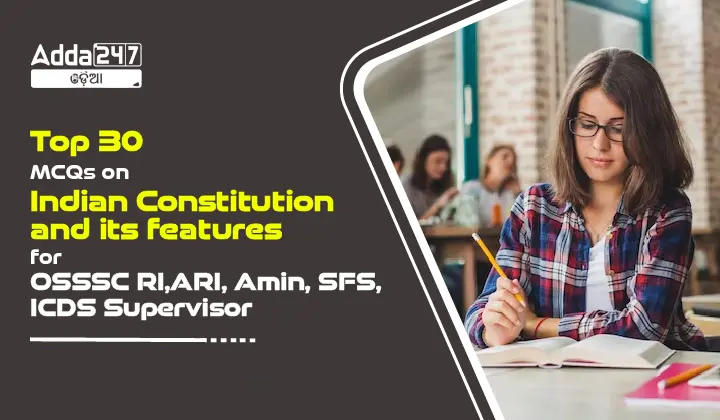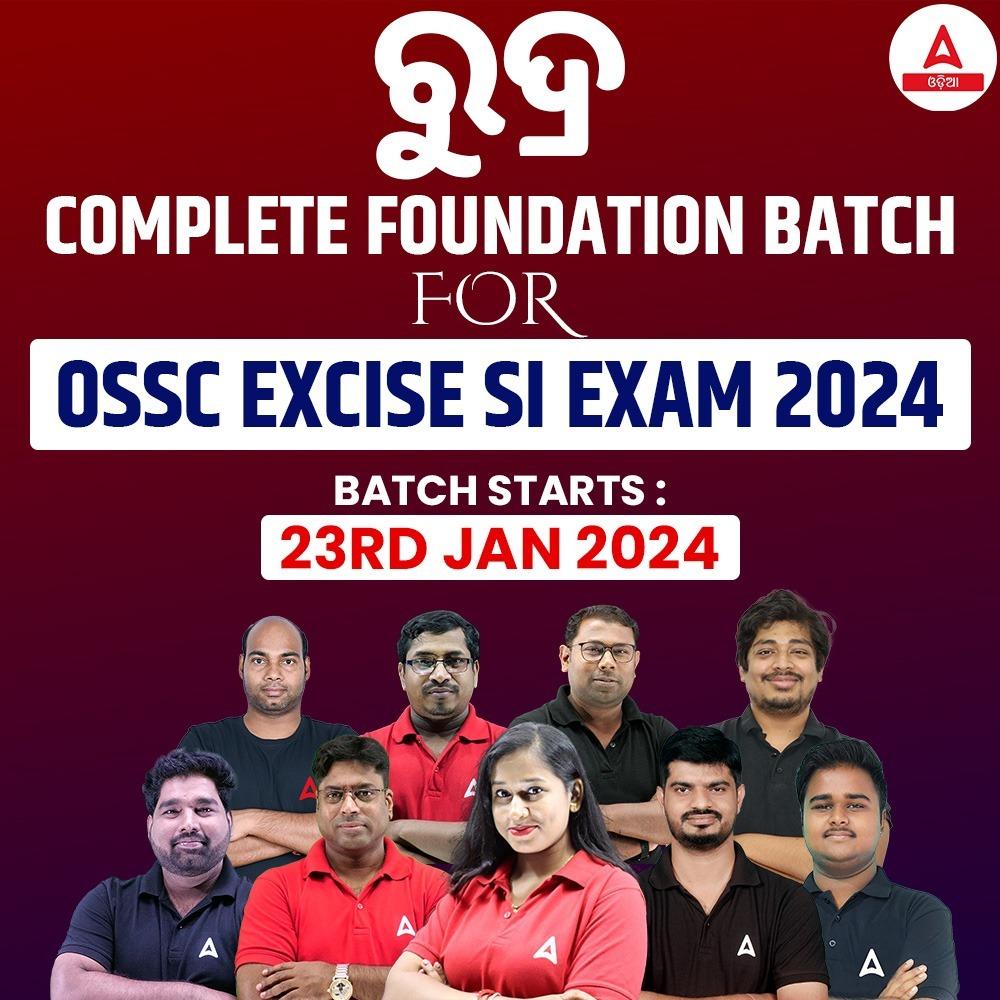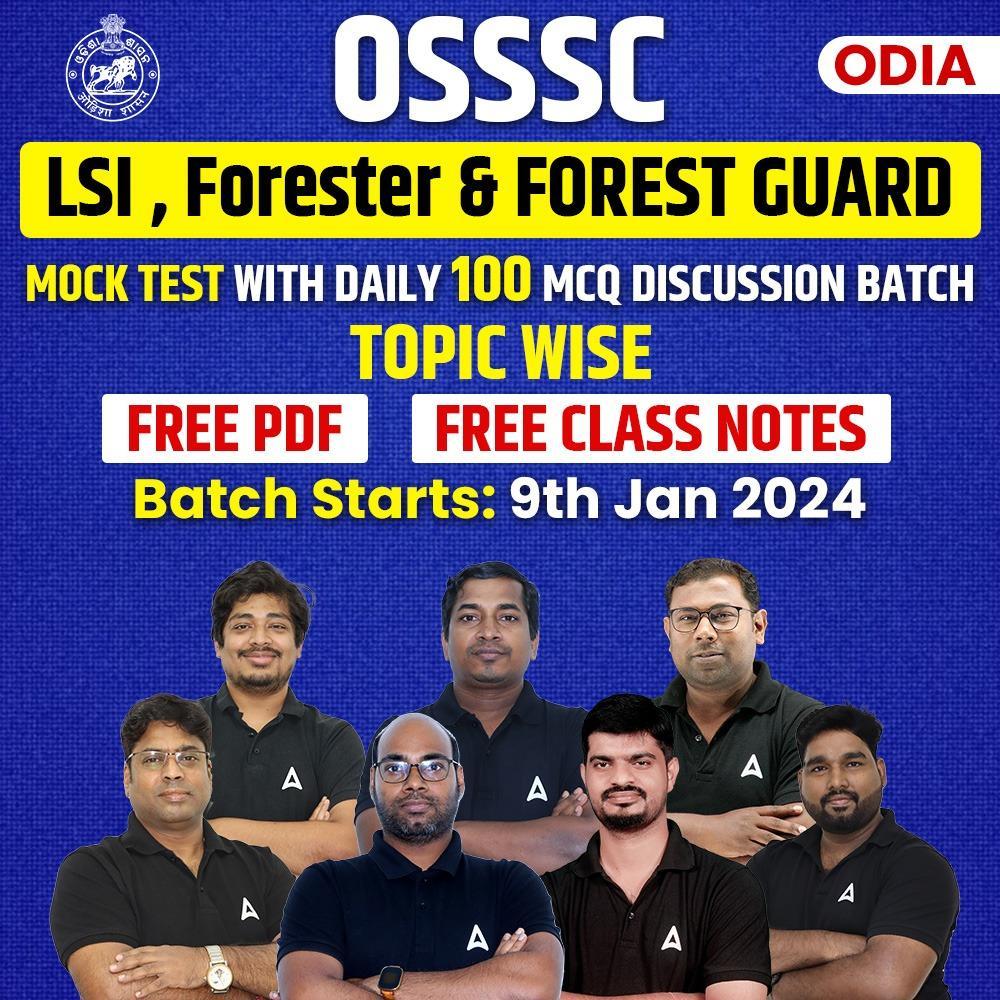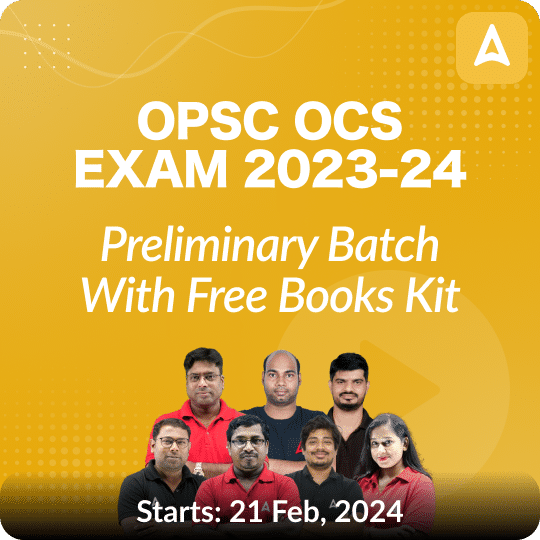The Indian Constitution, a foundational document that governs the world’s largest democracy, is a crucial topic for various competitive exams such as OSSSC RI, ARI, AMIN, SFS, ICDS Supervisor, and others. To help you prepare effectively, here are 30 Multiple Choice Questions (MCQs) that cover various aspects of the Indian Constitution and its features. Test your knowledge and solidify your understanding of this important subject.
Top 30 MCQs on Indian Constitution and its features for OSSSC RI, ARI, AMIN,SFS, ICDS Supervisor
Mastering the intricacies of the Indian Constitution is crucial for success in exams like OSSSC RI, ARI, AMIN,SFS, ICDS Supervisor. These 30 MCQs cover a range of topics, allowing aspirants to evaluate their knowledge and focus on areas that require further attention. Keep honing your understanding of the Constitution to excel in your preparations and future endeavors.
- Which of the following amendments gave for the first time a clear-cut constitutional recognition to the existence of political parties?
A. 7th Amendment
B. 35th Amendment
C. 52nd Amendment
D. 66th Amendment
Correct Answer: C [52nd Amendment] - Who among the following is the Supreme Commander of Indian armed forces?
A. President of India
B. Vice President of India
C. Prime Minister of India
D. Defense Minister of India
Correct Answer: A [President of India] - “Right to vote” can be placed in which among the following categories?
A. Fundamental Right
B. Constitutional Obligation
C. Fundamental Duty
D. Legal Right
Correct Answer: D [Legal Right] - “Riksdag” is the name of the parliament of which of the following?
A. Iran
B. Norway
C. Sweden
D. Kazakhstan
Correct Answer: C [Sweden] - JVP committee which was constituted in 1948-49 was related to which of the following?
A. Industrialization of India
B. Formation of new states on linguistic basis
C. National language of India
D. Reservation for SC & STs
Correct Answer: B [Formation of new states on linguistic basis] - Which among the following was the first state in India where emergency was imposed due to failure of Constitutional Machinery of the state?
A. Kerala
B. Bombay
C. Punjab
D. Uttar Pradesh
Correct Answer: C [Punjab] - In which year was Sikkim included in the North Eastern Council?
A. 1992
B. 1999
C. 2002
D. 2005
Correct Answer: C [2002] - Judicial Review is the most distinctive contribution of which of the following Supreme Courts?
A. Supreme Court of the United States
B. Supreme Court of Canada
C. Supreme Court of India
D. Supreme Court of the United Kingdom
Correct Answer: A [Supreme Court of the United States] - Who among the following is the ex-officio chairman of Indian Council of World Affairs?
A. Foreign Minister
B. President
C. Vice President
D. Prime Minister
Correct Answer: C [Vice President] - Which of the following was a provision of the 45th Amendment to the Indian Constitution?
A. Minorities Commission
B. Commission for Scheduled Castes and Scheduled Tribes
C. Extension of reservation of seats for Scheduled Castes and Scheduled Tribes
D. None of the above
Correct Answer: C [Extension of reservation of seats for Scheduled Castes and Scheduled Tribes] - Under the Environment (Protection) Act, 1986, which state has the highest number of identified Ecologically Sensitive Zones?
[A] Maharashtra
[B] Andhra Pradesh
[C] Tamil Nadu
[D] Karnataka
Correct Answer: A [Maharashtra] - Which writ is commonly referred to as a “wakening call”?
[A] Mandamus
[B] Prohibition
[C] Certiorari
[D] Quo Warranto
Correct Answer: A [Mandamus] - Which country has an ‘unwritten’ constitution?
[A] Britain
[B] USA
[C] China
[D] Russia
Correct Answer: A [Britain] - Who served as the second President of India?
[A] Dr. Zakir Hussain
[B] Dr. S. Radhakrishnan
[C] Dr. Rajendra Prasad
[D] V. V Giri
Correct Answer: B [Dr. S. Radhakrishnan] - Which constitutional provision aims to uphold and protect the sovereignty, unity, and integrity of India?
[A] Directive Principles of State Policy
[B] Preamble to the Constitution
[C] Fundamental Duties
[D] Fundamental Rights
Correct Answer: C [Fundamental Duties] - Arrange the following states based on their representation in the Lok Sabha:
I. Andhra Pradesh
II. Madhya Pradesh
III. Tamil Nadu
IV. Maharashtra
Which sequence is correct (from highest to lowest)?
[A] IV > III > II > I
[B] I > II > III > IV
[C] IV > III > II > I
[D] II > I > III > IV
Correct Answer: A [IV > III > II > I] - Which commission recommended the abolition of the I.A.S. and the I.P.S.?
[A] Dhebar Commission
[B] Kalekar Commission
[C] Kher Commission
[D] Rajamannar Commission
Correct Answer: D [Rajamannar Commission] - Which of the following combinations of states are correctly matched?
[A] I and II
[B] II and III
[C] I and IV
[D] I, II, III, and IV
Correct Answer: D [I, II, III, and IV] - Who chaired the Union Powers Committee?
[A] Dr. Rajendra Prasad
[B] Jawaharlal Nehru
[C] B. R. Ambedkar
[D] Sardar Vallabhbhai Patel
Correct Answer: B [Jawaharlal Nehru] - Who famously stated, “India is an indestructible Union of destructible states”?
[A] Jawaharlal Nehru
[B] B. R. Ambedkar
[C] B. N. Rau
[D] Dr. Rajendra Prasad
Correct Answer: B [B. R. Ambedkar] - Which of the following are unitary features of the government of India?
A) Only 1
B) Only 1 & 3
C) Only 1, 2 & 3
D) All of the above
Correct Answer: D [All of the above] - Who can file nomination papers for election to Lok Sabha?
A) any citizen of India
B) anyone residing in India
C) a resident of a constituency from where the election is to be contested
D) any citizen of India whose name appears in the electoral roll of a constituency
Correct Answer: D [any citizen of India whose name appears in the electoral roll of a constituency] - Which of the following is not a demerit of proportional representation system?
A) Highly expensive
B) No scope for organising by-elections
C) Promotes minority thinking and group interests
D) It establishes intimate contacts between voters and representatives
Correct Answer: D [It establishes intimate contacts between voters and representatives] - According to which Constitutional Amendment do defectors have no more protection on grounds of splits?
A) 91st
B) 96th
C) 99th
D) 100th
Correct Answer: A [91st] - How many parliaments are there in the Inter-Parliamentary Union at present?
A) 152
B) 153
C) 154
D) 155
Correct Answer: B [153] - What is the other term for ‘judicial dynamism’?
A) Judicial review
B) Judicial activism
C) Judicial restraint
D) None of the above
Correct Answer: B [Judicial activism] - Which of the following statements are correct with respect to Article 163?
There shall be a Council of Ministers with the Chief Minister as the head to aid and advise the Governor.
If any question arises whether a matter falls within the Governor’s discretion or not, the decision of the Governor is subject to review.
The advice tendered by Ministers to the Governor shall not be inquired into in any court.
Select the correct option from the codes given below:
A) Only 1
B) Only 2
C) Only 1 & 3
D) Only 2 & 3
Correct Answer: C [Only 1 & 3] - Who is authorized to extend the jurisdiction of a High Court?
A) Parliament
B) Supreme Court
C) President
D) State Legislature
Correct Answer: A [Parliament] - In which year was a study team on Panchayati Raj Finances under K. Santhanam constituted?
A) 1963
B) 1964
C) 1965
D) 1966
Correct Answer: A [1963] - Which of the following are the sources of income for urban local bodies?
A) Tax Revenue
B) Grants
C) Loans
D) All of them
Correct Answer: D [All of them]
















